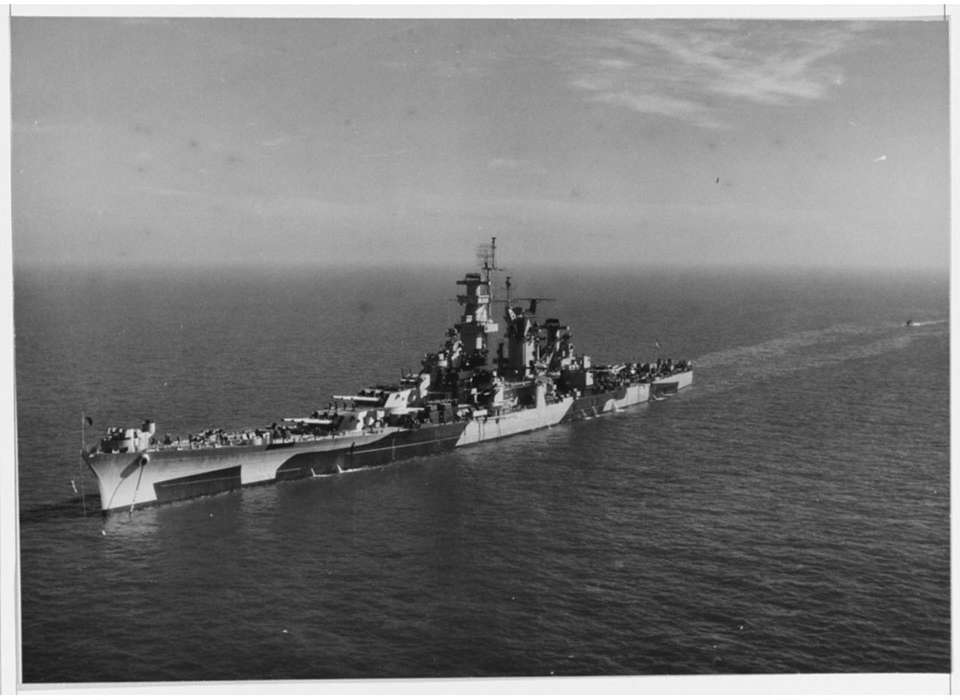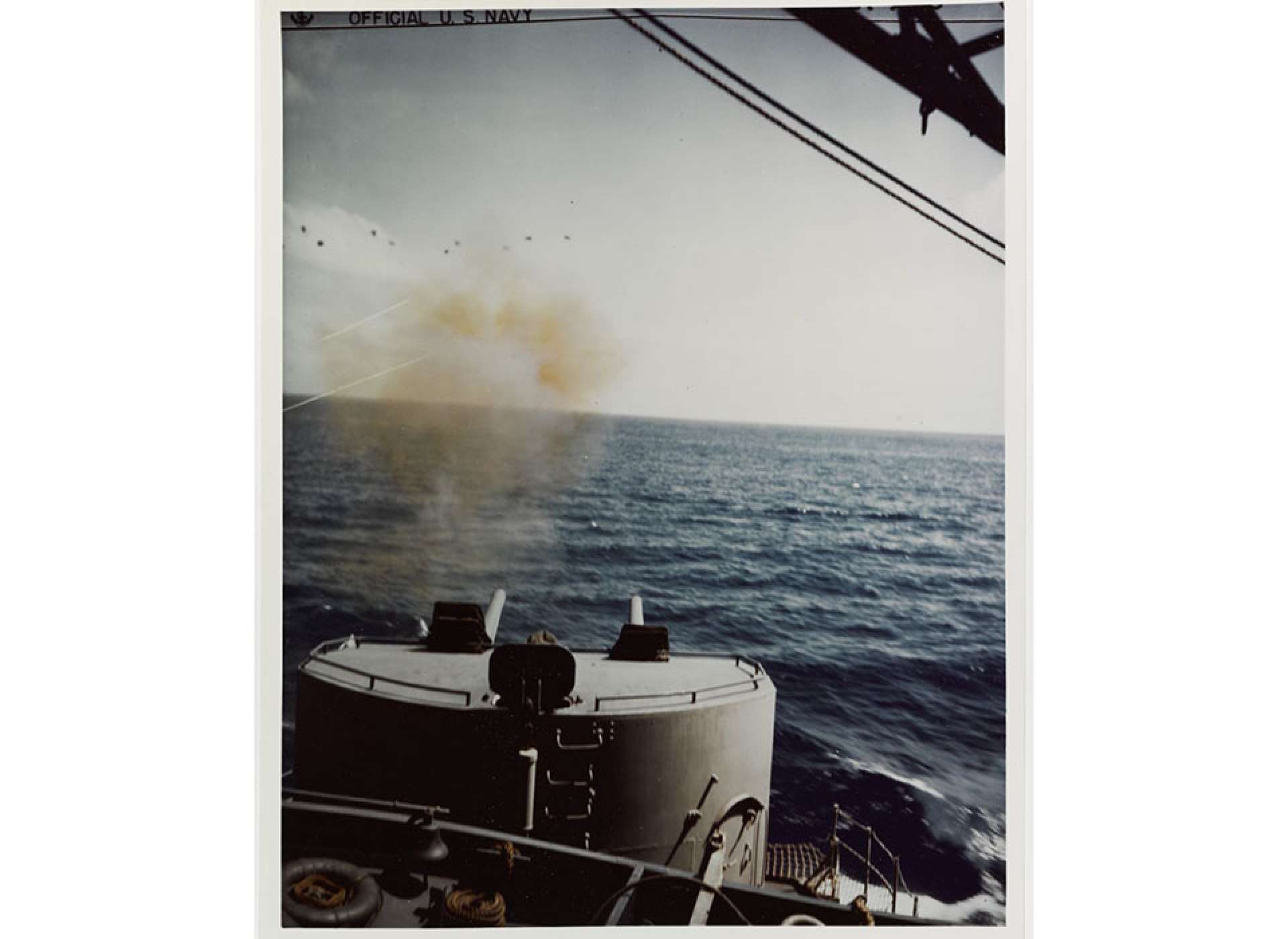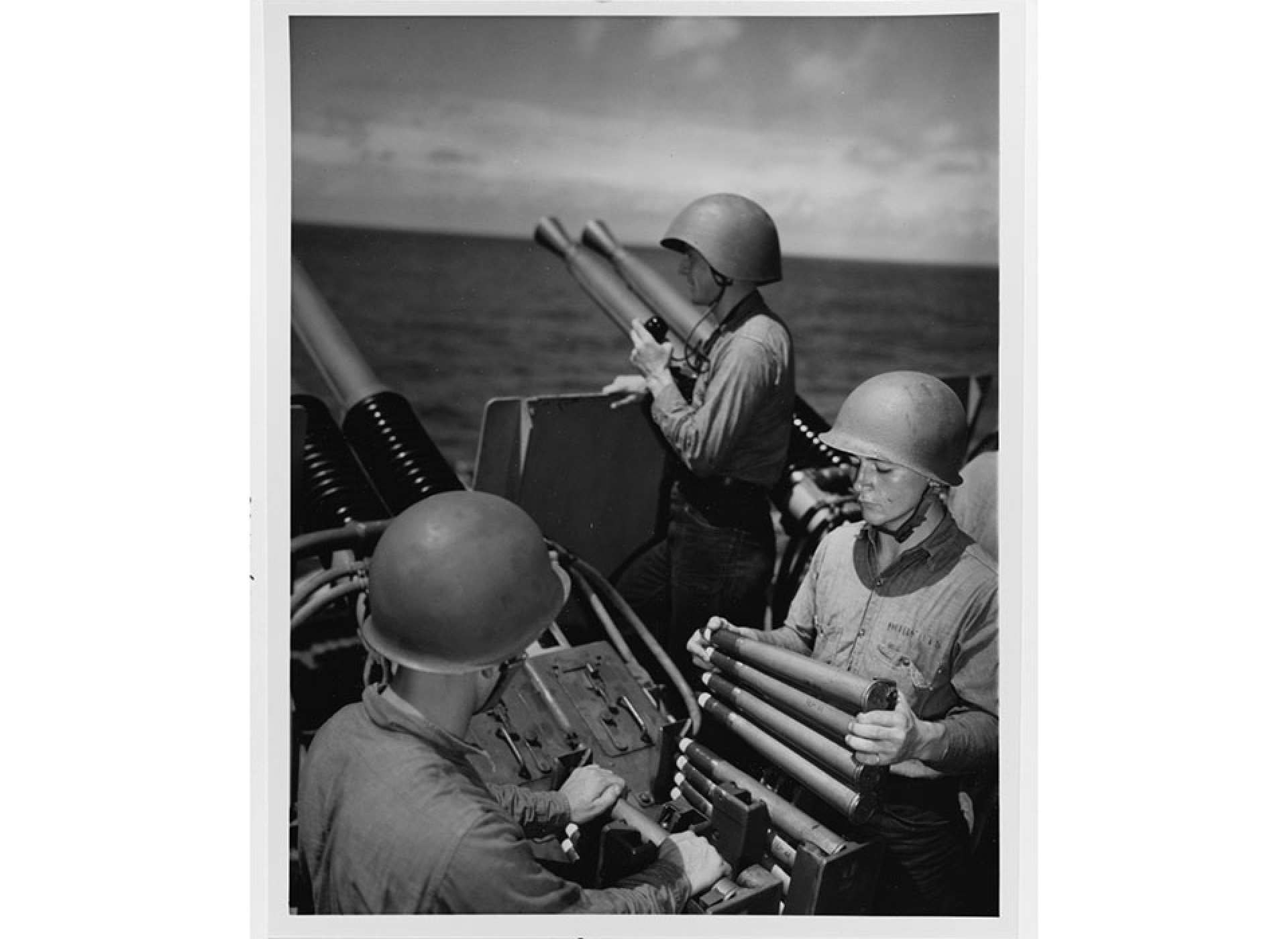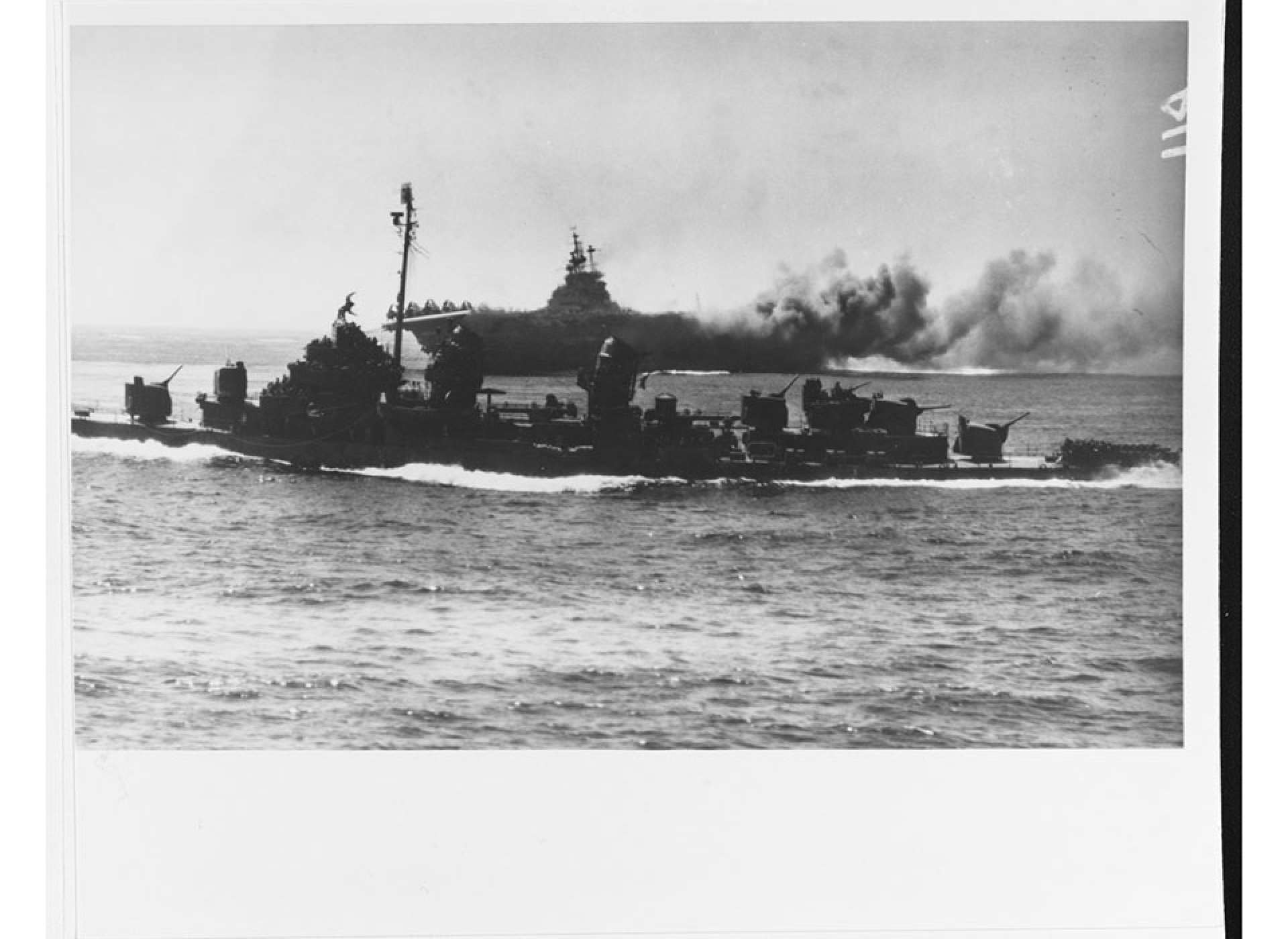During the period leading up to the Japanese strike at Pearl Harbor in December 1941, the US Navy was racing to build a fleet capable of taking on the Germans in the Atlantic and the Japanese in the Pacific. There were real concerns the Americans would have to fight both at the same time, and possibly alone, if the Allies were defeated before the United States entered the war. Although a few small naval construction bills had made it through an isolationist US Congress during the 1930s, it took the Germans overrunning France in six weeks and the Japanese threatening American possessions across the Pacific to get the government to react. On July 19, 1940, the US passed the Vinson-Walsh Act, better known as the Two-Ocean Navy Act, which immediately increased the size of the US Navy by 70 percent. While the act authorized construction of 257 ships, some of the most notable provisions of the legislation included the building of 18 aircraft carriers, seven battleships, and six Alaska-class cruisers.
After the aerial attack from Japanese carriers on Pearl Harbor, construction on new, big-gunned vessels like battleships was significantly scaled back or outright canceled. Out of all the newly authorized or under construction battleships for the US Navy, only four Iowa-class, four South Dakota-class, and none of the Montana-class ships entered service after December 7, 1941. Time and technology had caught up with battleships. The aircraft carrier now formed the backbone of naval fleets moving forward. However, this left the six authorized Alaska-class cruisers, and a dilemma on what to do with them.
While the primary mission of a cruiser was to escort the US Navy’s new fast carrier task forces and protect them against enemy surface combatants or aircraft, the Alaska's were not your typical cruisers. With the naval rearmament of the German Kriegsmarine in the 1930s with its small, but potent force of commerce raiders including ships like the Scharnhorst, and the rumored but unconfirmed new battlecruisers of the Imperial Japanese Navy, there were worries in Washington that the US Navy would not have an answer for these ships, and could be vulnerable. The Alaska’s were the US Navy’s answer to these potential foes.
Standard American heavy cruiser design, like the 673 feet-long, 14,500-ton Baltimore-class, were armed with (9) 8” guns, (12) 5” guns, and (24) 20mm guns. By comparison, the Alaska’s were 808 feet-long and weighed 29,771 tons. They were armed with (9) 12” guns, (12) 5” guns, (56) 40mm guns, and (34) 20mm guns. The modern 12” guns carried by the Alaska’s were also an improvement over the 14” guns carried by the older battleships in the US fleet. Moving at a top speed of 33 knots, these ships were designed to be cruiser-killers, and would be able to get in and get out of trouble as quickly as possible and throw a hell of a punch. However, this speed and firepower came at a cost. The Alaska’s had adequate armored protection from shellfire from enemy cruisers, but were at a severe disadvantage against battleships. One major problem was a complete lack of a torpedo defense system. Attacks by German U-boats or the infamous Japanese Type 93 “Long Lance” torpedoes were a constant worry.
Due to the uniqueness of the Alaska-class design, these ships were not classified “CA” as typical for heavy cruisers, but instead “CB” for large cruiser. Also, as a nod to their not-quite-battleship, not-quite-cruiser roots, instead of being named after US states or cities, the ships were named after US territories with the USS Alaska (CB-1) being the first. The rest of the class would be the USS Guam (CB-2), USS Hawaii (CB-3), USS Philippines (CB-4), USS Puerto Rico (CB-5), and USS Samoa (CB-6).
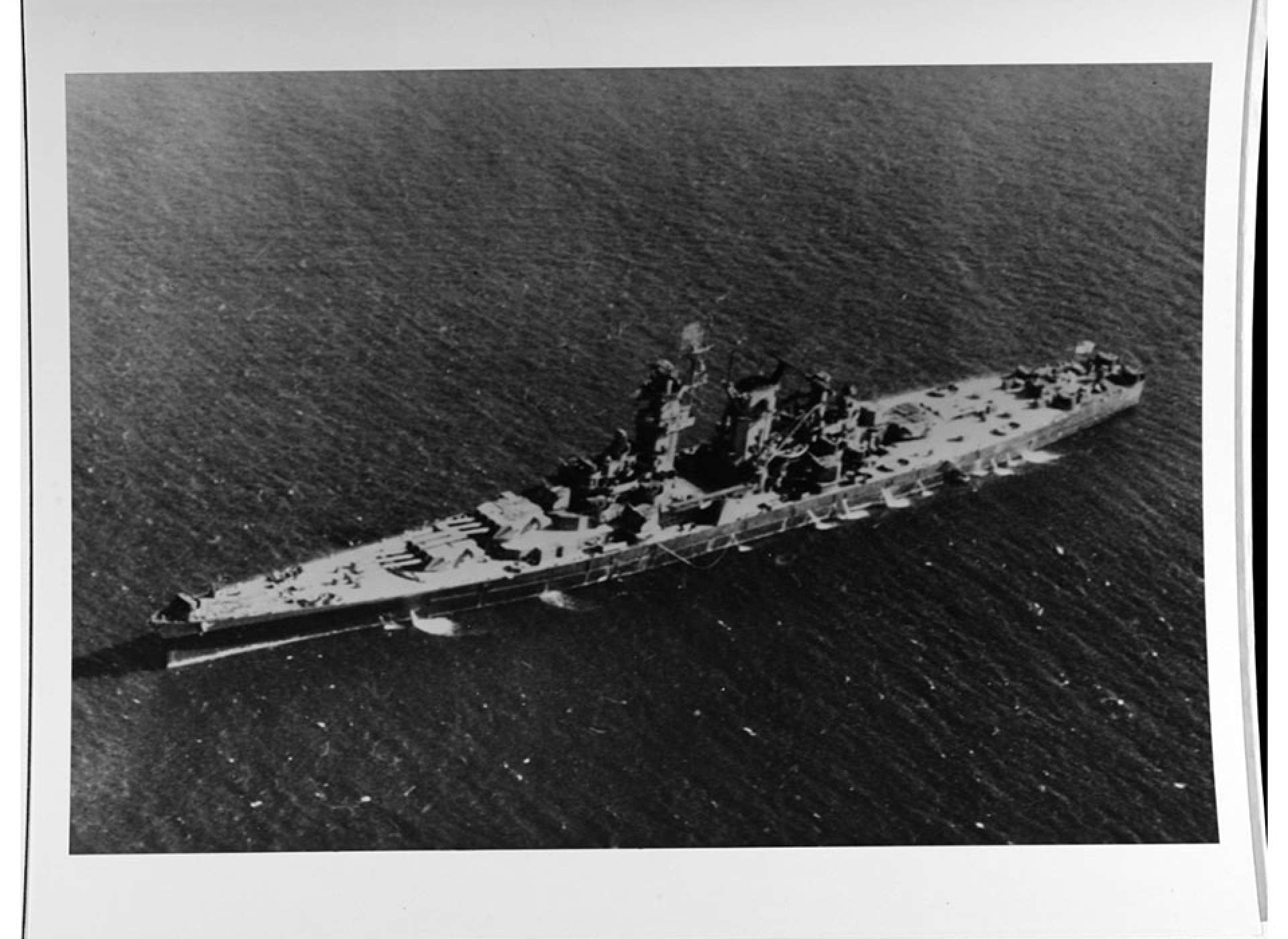
Aerial view of Alaska probably taken somewhere in the Pacific in 1945. Courtesy Naval History and Heritage Command.
But not even the Alaska’s could escape the quickly changing reality of naval combat. In May 1942, the US Navy decided to cut the number of ships to just three and reallocate resources to other desperately needed ships, such as more aircraft carriers, escort ships, and landing craft. Even then, just the Alaska and Guam were completed as construction was halted again on the Hawaii, and it was scrapped soon after the war. After Alaska and Guam were finished and commissioned in late 1944, they soon found themselves in the Pacific in the thick of the fight to finish off a doomed, but still dangerous Japanese empire.
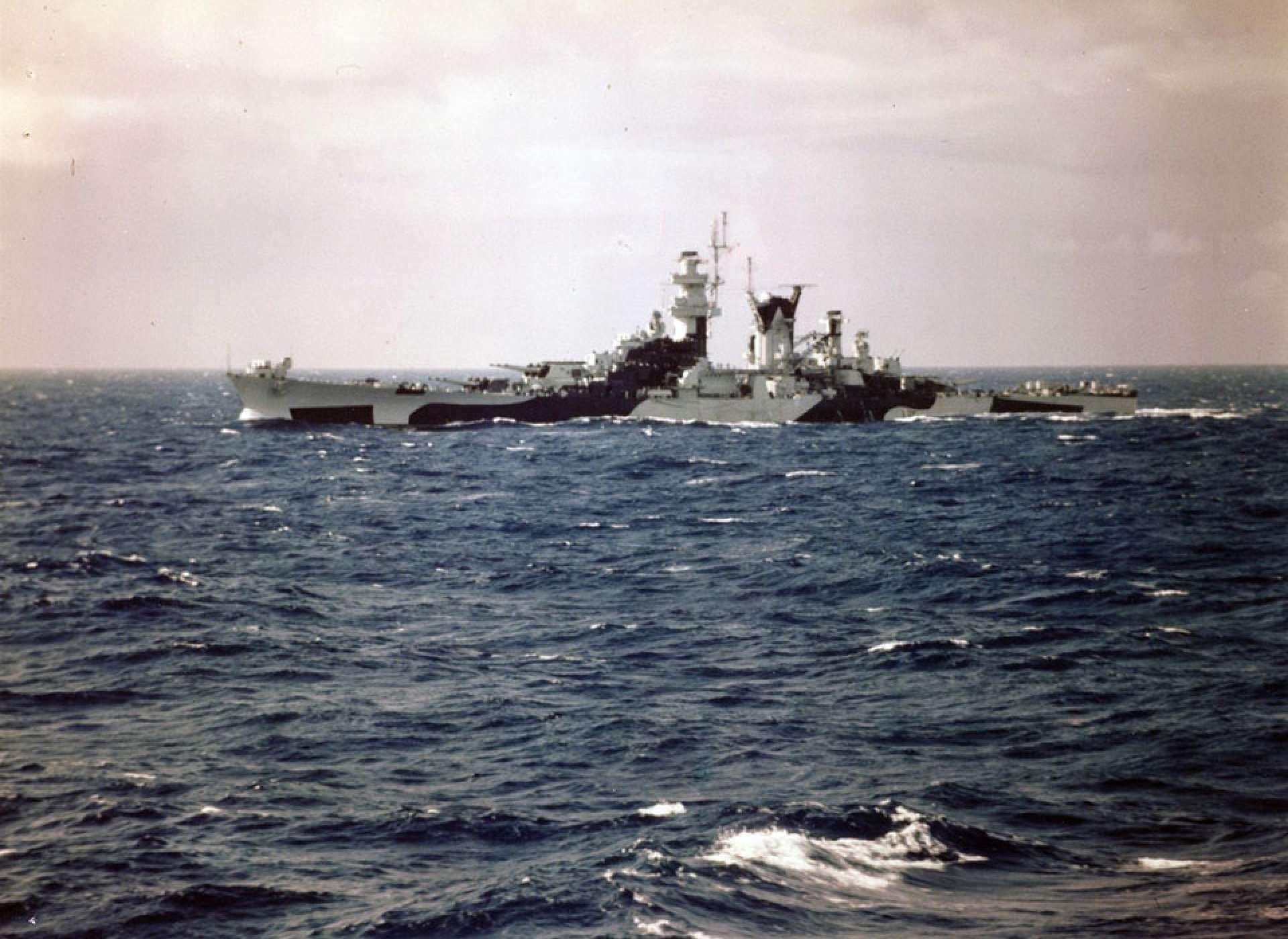
USS Alaska (CB-1) photographed from USS Missouri (BB-63) off the US east coast during their shakedown cruise together in August 1944. Courtesy Naval History and Heritage Command.
Alaska and Guam left the United States and joined up with Task Force 58 at the Ulithi Atoll fleet anchorage in February and March 1945, respectively. Since the Imperial Japanese Navy was almost all at the bottom of the Pacific by this point in the war, the ships provided anti-aircraft defense for the aircraft carriers and took part in shore bombardment missions. For the Alaska and Guam, there would be no battle against Japanese battlecruisers, trading salvo for salvo in an epic struggle for supremacy of the seas.
-

USS Alaska (CB-1) test firing her 5” guns on February 5, 1945, one day before the ship arrived at the Ulithi Atoll anchorage to join the fast carrier task force. Note flak bursts from shells exploding in the top left. Courtesy Naval History and Heritage Command.
-

Crew of a 40mm anti-aircraft gun mount loading ammunition into the weapon on the Alaska. This photo was taken on March 6, 1945, off Iwo Jima. Courtesy Naval History and Heritage Command.
-

View of the USS Intrepid (CV-11) on fire after she was hit by Japanese bombs on April 16, 1945. This photograph was taken from the Alaska as a Fletcher-class destroyer steamed by. Courtesy Naval History and Heritage Command.
However, there was a battle raging against Japanese kamikaze suicide planes, and both ships would prove to be formidable air defense platforms in the air battles around Iwo Jima and Okinawa. Unfortunately, kamikaze strikes still occurred at an alarming rate against the US fleet. When the aircraft carrier USS Franklin (CV-13) was hit by Japanese bombs on March 19, 1945, it was the Alaska and Guam, along with several other ships, who escorted her to safety. The Franklin suffered over 1,200 casualties, and was the most heavily damaged US ship in the war to survive.
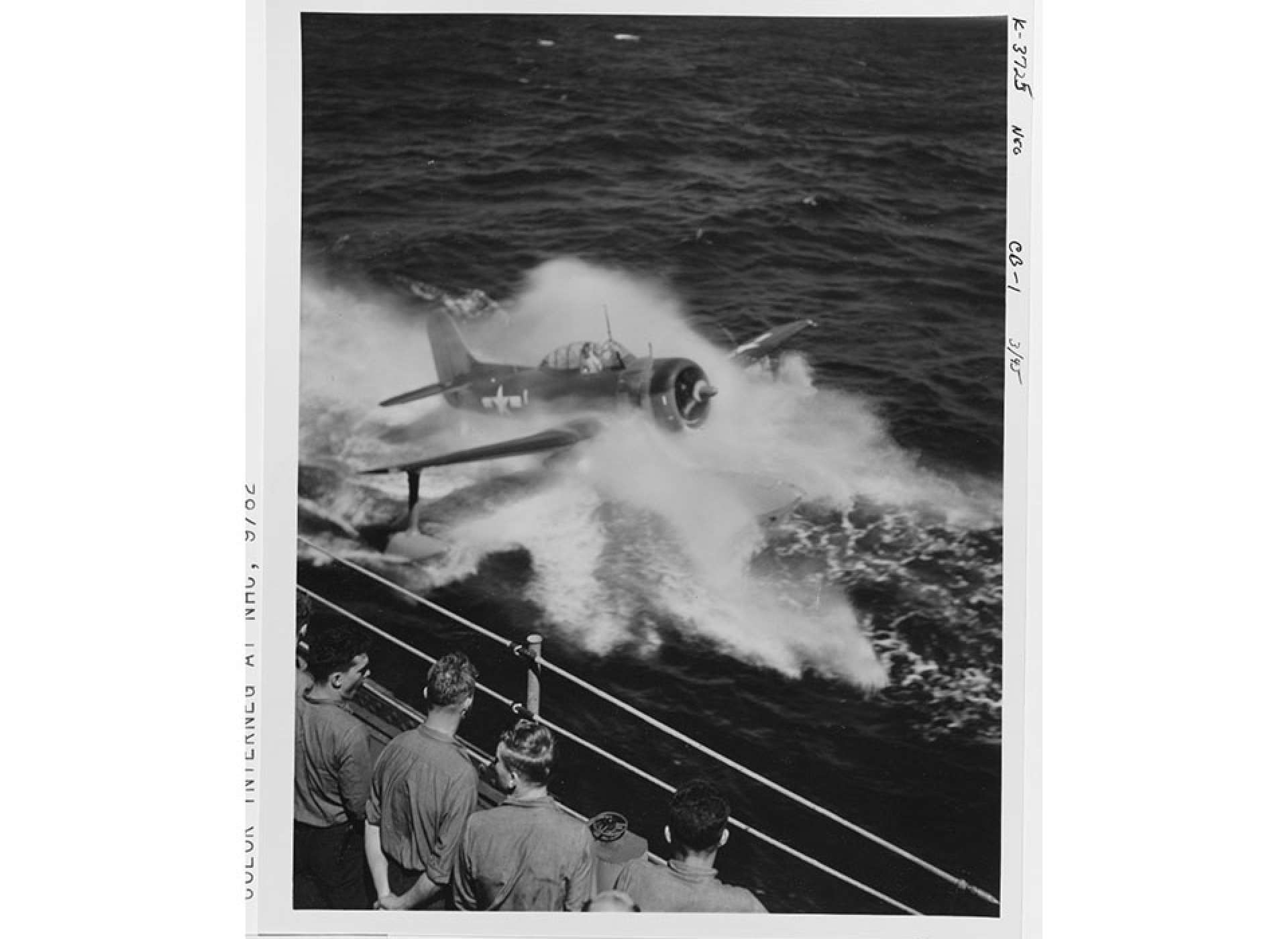
One of the Alaska’s Curtiss SC-1 floatplanes taxiing up to the ship to be picked up by the aircraft crane. This photo was taken during operations off Iwo Jima in March 1945. Courtesy Naval History and Heritage Command.
During the summer of 1945, the Alaska and Guam conducted several shore bombardment missions and even sailed into the East China and Yellow Seas to find Japanese shipping, but found few targets. After the surrender of the Japanese, both ships went to Korea to provide assistance in the transfer of power to the Allies. Both also participated in Operation Magic Carpet, the repatriation of American forces back home from overseas. With the end of the war, the US Navy had hundreds of ships that were either surplus or obsolete and no longer needed. Alaska and Guam were placed in reserve in New Jersey, where they sat until scrapped in the 1960s.
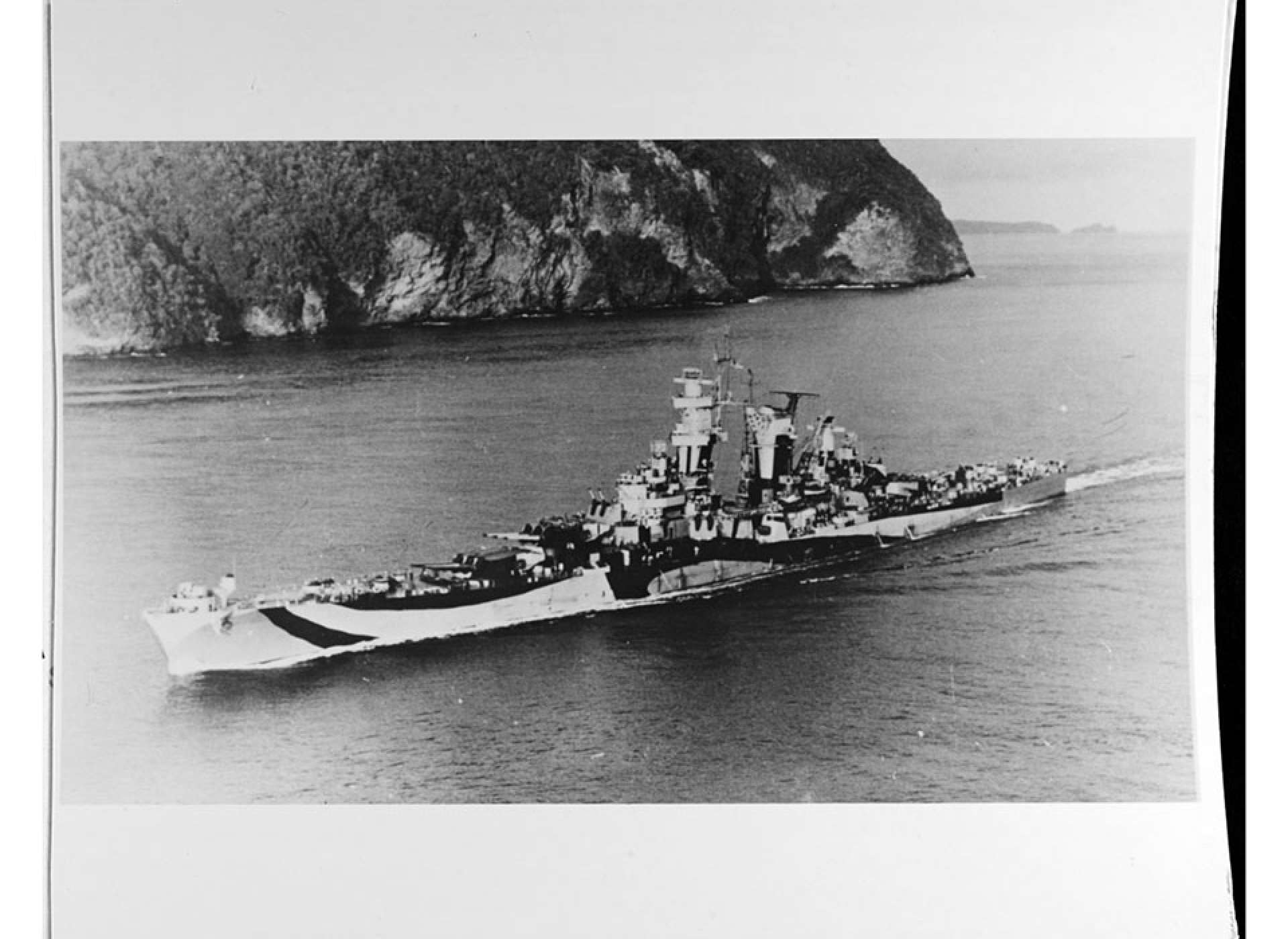
View of USS Guam (CB-2) off the island of Trinidad during its shakedown cruise. Courtesy Naval History and Heritage Command.
So, what are the legacies of these ships? Both had very short service careers and combat history, with Alaska being active for 32 months and Guam for only 29. Their very existence and usefulness was hotly debated then, and it still is today. Were these ships cruisers or were they American battlecruisers? Were they relics of a long past era and obsolete before they even entered service? If you were to ask the US Navy if these ships were battlecruisers or cruisers, the emphatic answer was cruiser. Sure, there is certainly an argument to be made for battlecruiser, but this author leans towards these ships being cruisers on steroids. But if you are someone who loves naval history and beautifully designed ships, the Alaska’s are certainly a fun one to talk about around the water cooler.
This article is part of an ongoing series commemorating the 75th anniversary of the end of World War II made possible by Bank of America.
James Linn
A New Orleans native, James Linn first became involved with the institution then known as The National D-Day Museum in 2001 as an eighth-grade volunteer on weekends and during the summer. Linn joined The National WWII Museum staff in 2014 and served as a Curator until 2020.
Cite this article:
MLA Citation:
APA Citation:
Chicago Style Citation:
